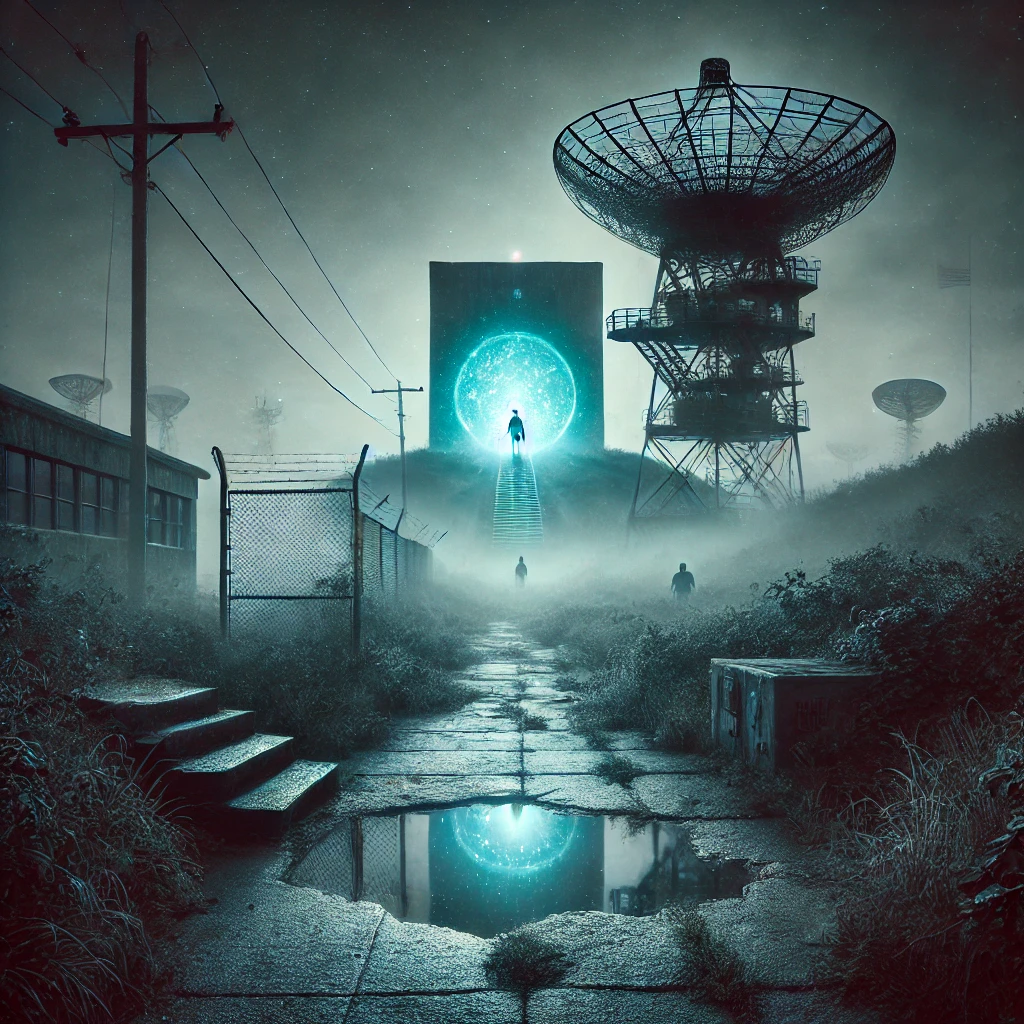Why be normal, when the weird stuff is way more interesting?
If you’re a fan of Netflix’s Stranger Things, you might have wondered where the inspiration for the show’s eerie experiments and interdimensional adventures originated. Enter the Montauk Project, a conspiracy theory that has captivated the imagination of many, claiming that a secret government program conducted bizarre experiments involving mind control, time travel, and contact with other dimensions. Is it just a wild tale, or is there more to this story?
Origins of the Montauk Project
The Montauk Project’s story begins at Camp Hero, a decommissioned military base in Montauk, New York. While the site itself is very real, claims of what happened there border on the unbelievable. Allegedly, during the Cold War era, the U.S. government used the facility to conduct clandestine experiments under the guise of national security. The program supposedly grew out of the Philadelphia Experiment, another controversial story about naval invisibility and teleportation.
The primary source of these allegations is Preston Nichols, who authored The Montauk Project: Experiments in Time. Nichols claims to have worked on the project and recovered repressed memories of the chilling experiments conducted there.
The Wild Claims
What makes the Montauk Project so compelling are the bizarre details tied to it:
- Mind Control Experiments – According to Nichols, researchers used techniques akin to those explored in MKUltra to manipulate minds and control individuals’ actions.
- Time Travel and Interdimensional Portals – Nichols and others allege that experiments led to the creation of time-travel technology and portals to other dimensions. One story even describes a young boy being sent to Mars.
- Psychic Experiments – The project reportedly involved children with psychic abilities, including one named “Duncan Cameron,” who allegedly could manifest objects and creatures through sheer thought.
- The “Montauk Monster” – Some conspiracy theorists tie the discovery of strange creatures on Montauk’s shores to experiments gone wrong at Camp Hero.
Connections to Stranger Things
The creators of Stranger Things initially pitched the show as Montauk. The parallels between the alleged experiments and the show’s storyline are uncanny: secret government labs, experiments on children, and even the idea of a shadowy alternate dimension called the Upside Down. While Stranger Things fictionalizes the story, it’s hard not to see the real-life inspiration woven into its DNA.
Expanding the Mystery: Additional Allegations
As the Montauk Project story evolved, new layers of intrigue were added:
- Psychological Programming – Some allege that participants were subjected to extensive psychological conditioning designed to create sleeper agents or alter personalities. These experiments allegedly used trauma-based methods to fracture the mind.
- Advanced Technology – Claims suggest that alien technology was reverse-engineered at Camp Hero, leading to rapid advancements in fields like quantum mechanics and energy manipulation.
- Project Moonbeam – A subset of the project reportedly focused on projecting holographic images into the sky as part of psychological warfare tactics. This has fueled theories about “false flag” alien invasions.
Real-World Locations and Their Impact
Camp Hero remains a focal point for conspiracy enthusiasts and paranormal investigators. The site, now a state park, is home to abandoned bunkers, eerie tunnels, and the iconic radar tower that looms like a relic of a forgotten time. Despite its scenic surroundings, the area’s strange atmosphere has given rise to rumors of unexplained sightings and sounds.
Why People Believe
The Montauk Project’s appeal lies in its ability to weave together elements of government secrecy, advanced science, and the supernatural. Believers point to the history of real government programs like MKUltra and the Philadelphia Experiment as evidence that truth can sometimes be stranger than fiction. The lack of transparency surrounding Camp Hero fuels the fire, making it easy for imaginations to run wild.
Skepticism and Believers
As with most conspiracy theories, the Montauk Project has its skeptics. Historians and former residents argue that there’s no hard evidence to support Nichols’ claims. The abandoned radar tower and bunkers at Camp Hero add to the mystique, but no official documents corroborate the wild tales.
However, believers argue that the lack of evidence is exactly what you’d expect from a top-secret government operation. Could the bizarre stories simply be a cover-up for something more mundane, or is the truth stranger than fiction?
Cultural Impact and Legacy
The Montauk Project has left a lasting mark on pop culture. Beyond Stranger Things, its themes have inspired books, movies, and countless discussions in online forums. It exemplifies how conspiracy theories can evolve into modern myths, shaping collective imaginations.
In many ways, the Montauk Project’s legacy is less about uncovering the “truth” and more about exploring humanity’s fascination with the unknown. Its story challenges our understanding of science and the limits of government experimentation, blending reality with fiction in a way that continues to captivate audiences.
Why It Matters
Whether fact or fiction, the Montauk Project serves as a powerful reminder of how stories can blend reality and imagination, creating modern folklore. It challenges us to question the boundaries of science, government secrecy, and the human mind’s potential.

